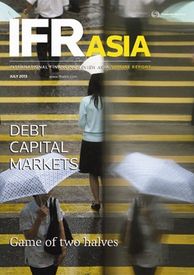Still hungry for more
The great bull-run in global credit has come to an end and, although investors are struggling to cope with the return to ‘normal’ US Treasury yields, Asia’s bond markets still have room to grow.

Source: Reuters/Paul Yeung People are seen in the reflection of a polished wall on a rainy day in Hong Kong. After the first half of 2013 broke all manner of records for the volume of debt offerings from Asia – not to mention revenues for underwriters – the inevitable correction in Asian credit was always going to be painful. The surging volatility in the US Treasury market in May–June was a nasty wake-up call for anyone assuming Asian bonds were a one-way bet. Prices tumbled across the board, regardless of credit rating or currency. Holders of...Read more
To purchase printed copies or a PDF of this report, please email leonie.welss@lseg.com and shahid.hamid@lseg.com
The great bull-run in global credit has come to an end and, although investors are struggling to cope with the return to ‘normal’ US Treasury yields, Asia’s bond markets still have room to grow.
Asia’s domestic currency pools are supposed to be big enough to protect the region’s growing companies from any turmoil in the global markets. A sell-off in US Treasuries, however, has had a big impact on yields across the region.
Fans of the asset class believe high-yield debt will be more resilient to rising US Treasury yields, but a period of risk aversion is putting that theory to the test.
The G3 market has been all about US dollar funding in recent years, but the greenback is not the only truly global currency on offer to Asian issuers. As dollar rates rise, the Samurai market is back in focus.
A clampdown on irregular trading and a cash crunch have left credit traders in no doubt that China is stepping up efforts to reform its capital markets. As traders and investors wait for clearer signals, however, the uncertainty is choking liquidity.
The introduction of loss-absorbing bank capital across Asia has stalled, with little sign of any consensus emerging across the region’s many distinct markets.
At least in Australia, the structured finance market is functioning normally. Hopes of a comeback elsewhere, however, look far-fetched.